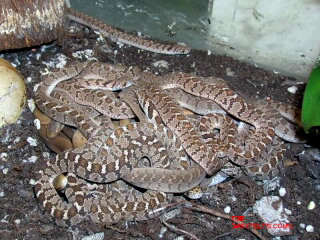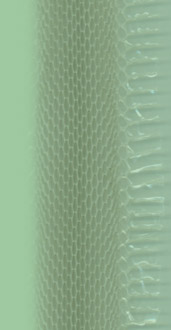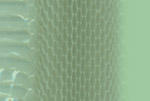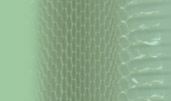









 |
 |
 |
 |
 |
 |

Egg-eating Snakes, Egg-eating Snakes, Dasypeltis
There are at present ten species and two with one subspecies each:
D. scabra, D. fasciata, D. inornata; D. atra, D. palmarum, D. abyssina, D. sahelensis, D. confusa, D. medici medici und D. m. lamuensis, D. gansi gansi und D. g. latericia.
All these species are native to Africa, with one occurring in the southern parts of the Arabian Peninsula as well.
 Egg-eaters inhabit a vast range of habitats. Some species occur in rainforests, others live in savannas. D. atra is a montane form that can still be encountered at altitudes of more than 2000 metres. Not only do the species differ from each other, but even within a species there is a vast range of variability in colouration and pattern. Males do not normally grow to the sizes typical of females. The latter typically reach 100-120 cm in length, whereas males are fully grown at 60-80 cm. Obviously there are deviations from the rule: two females in my care measure more than 120 cm, and one male almost touches the 1 m-mark. Keeping these snakes in a terrarium is only easy if a continuous supply of fresh bird eggs can be ensured. These must obviously be of the appropriate size, because even the eggs of dwarf quails are just too large for juveniles. As the vernacular name ŌĆ£egg-eaterŌĆØ suggests, the snakes will only eat fresh bird eggs! A terrarium should not fall short of 80 x 40 x 80 cm (lxdxh), and more space is always of advantage! Temperatures should be around 26-28┬░C during the day and decrease to room temperature (approx. 20┬░C) at night. A 40 W spotlight that heat a localized spot to some 35-38┬░C must not be wanting. Ordinary potting soil without chemical additives makes a suitable bottom substrate. Some climbing branches, cork tubes and a water bowl complete the decoration. To improve the visual appearance, a Scindapsus or Philodendron plant may be placed in the tank. Dasypeltis are not heavy and will therefore not damage live plants. They have a very calm disposition and are entirely harmless. Being nocturnal, these snakes will only be active from the time of dusk, however.
Egg-eaters inhabit a vast range of habitats. Some species occur in rainforests, others live in savannas. D. atra is a montane form that can still be encountered at altitudes of more than 2000 metres. Not only do the species differ from each other, but even within a species there is a vast range of variability in colouration and pattern. Males do not normally grow to the sizes typical of females. The latter typically reach 100-120 cm in length, whereas males are fully grown at 60-80 cm. Obviously there are deviations from the rule: two females in my care measure more than 120 cm, and one male almost touches the 1 m-mark. Keeping these snakes in a terrarium is only easy if a continuous supply of fresh bird eggs can be ensured. These must obviously be of the appropriate size, because even the eggs of dwarf quails are just too large for juveniles. As the vernacular name ŌĆ£egg-eaterŌĆØ suggests, the snakes will only eat fresh bird eggs! A terrarium should not fall short of 80 x 40 x 80 cm (lxdxh), and more space is always of advantage! Temperatures should be around 26-28┬░C during the day and decrease to room temperature (approx. 20┬░C) at night. A 40 W spotlight that heat a localized spot to some 35-38┬░C must not be wanting. Ordinary potting soil without chemical additives makes a suitable bottom substrate. Some climbing branches, cork tubes and a water bowl complete the decoration. To improve the visual appearance, a Scindapsus or Philodendron plant may be placed in the tank. Dasypeltis are not heavy and will therefore not damage live plants. They have a very calm disposition and are entirely harmless. Being nocturnal, these snakes will only be active from the time of dusk, however.
Recommended reading on the subject of Dasypeltis:
HERMANN, R. (1994): Dasypeltis scabra - SAURIA, Suppl., Berlin, 16 (3): 289-296
HERMANN, R. (1994): Anmerkungen ├╝ber eine unerwartete Nachzucht der ostafrikanischen Eierschlange Dasypeltis medici lamuensis Gans, 1957 - SAURIA, Berlin, 16 (3): 3-9
SCHILLERT, A. S. (2004): Dasypeltis fasciata - SAURIA, Suppl., Berlin, 26 (3): 609-612


